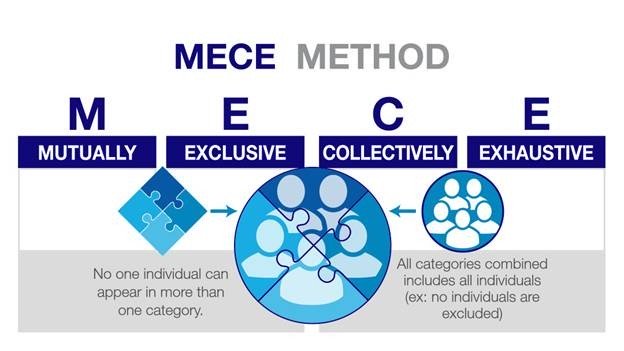Decoding Marketing Strategy Theory: Unleashing the Power of Strategic Marketing
In the fierce arena of business competition, mastering the art of strategic marketing is the key to success and staying ahead. Enter marketing strategy theory—the guiding force that empowers organizations to craft and execute impactful marketing plans. By embracing this systematic framework and principles, businesses unlock the potential to make informed decisions, optimize resources, and conquer their marketing objectives. Get ready to decode the secrets of marketing strategy theory and unleash the power of strategic marketing for unparalleled success.
What Does Marketing Strategy Theory Mean and Its Importance
Marketing strategy theory refers to a set of principles, concepts, and frameworks that guide businesses in developing and executing their marketing plans. It encompasses a strategic approach to identifying target markets, understanding customer needs, positioning products or services, and implementing marketing tactics to achieve business goals.
The importance of marketing strategy theory cannot be overstated. Here’s why it matters:
- Strategic Focus: Marketing strategy theory helps businesses align their marketing efforts with their overall business objectives. It provides a roadmap for making strategic decisions, allocating resources, and prioritizing marketing initiatives.
- Competitive Advantage: In a crowded marketplace, a well-crafted marketing strategy can set a business apart from its competitors. By understanding marketing strategy theory, businesses can identify unique value propositions, differentiate themselves, and attract their target audience.
- Resource Optimization: Marketing resources, such as time, budget, and manpower, are limited. Marketing strategy theory enables businesses to optimize their resources by focusing on activities that yield the highest return on investment (ROI). It helps allocate resources effectively, minimizing wastage and maximizing impact.
Significance of Understanding Marketing Strategy Theory for Businesses
Understanding marketing strategy theory is crucial for businesses for the following reasons:
- Strategic Decision Making: Marketing strategy theory provides a structured approach to decision-making, enabling businesses to make informed choices about their target markets, product offerings, pricing strategies, and promotional activities. This strategic mindset helps businesses stay focused on long-term goals and adapt to changing market conditions.
- Resource Allocation: By understanding marketing strategy theory, businesses can allocate their marketing resources effectively. They can identify the most promising opportunities, prioritize initiatives, and allocate budgets accordingly. This ensures that resources are utilized optimally and generate the highest possible return on investment.
- Competitive Advantage: Marketing strategy theory empowers businesses to differentiate themselves from competitors. By understanding their target market’s needs and preferences, businesses can develop unique value propositions that resonate with customers. This differentiation gives them a competitive advantage and helps build brand loyalty.
In conclusion, marketing strategy theory is a critical framework that helps businesses navigate the complex world of marketing. By understanding and applying marketing strategy theory, businesses can develop effective marketing plans, allocate resources wisely, and achieve their business objectives. In the next sections of this article, we will delve deeper into each component of marketing strategy theory to provide a comprehensive understanding of its application in the real world.
Components of Marketing Strategy Theory
Marketing strategy theory encompasses a range of components that form the foundation for developing effective marketing strategies. These components provide frameworks, models, and concepts to guide businesses in understanding the market, analyzing competition, identifying target customers, and formulating strategic approaches. Here are some key components of marketing strategy theory:
1. Market Analysis and Segmentation

Market analysis and segmentation are vital steps in developing a successful marketing strategy. Let’s dive into their importance and explore techniques and tools for conducting market analysis, along with different approaches to market segmentation.
Importance of Market Analysis and Segmentation
Market analysis allows businesses to gain a deep understanding of their target market, including customer needs, preferences, and behavior. By conducting comprehensive market analysis, businesses can make informed decisions and tailor their marketing efforts to meet the specific demands of their target audience. It helps in identifying market trends, competitive landscape, and potential opportunities for growth.
Market segmentation further refines the target market by dividing it into distinct groups with similar characteristics and needs. This enables businesses to create tailored marketing messages and strategies that resonate with specific customer segments. By targeting the right audience, businesses can enhance customer engagement, improve conversion rates, and drive long-term customer loyalty.
Techniques and Tools for Conducting Market Analysis
There are various techniques and tools available for businesses to conduct market analysis effectively. Some commonly used methods include:
- Surveys and Interviews: Businesses can gather valuable insights by conducting surveys and interviews with target customers. This allows them to understand customer preferences, pain points, and buying behavior.
- Market Research Reports: Leveraging market research reports provides businesses with comprehensive data and analysis on industry trends, market size, consumer behavior, and competitive dynamics.
- Data Analytics: Analyzing internal and external data can provide businesses with actionable insights. By leveraging data analytics tools, businesses can uncover patterns, trends, and correlations to make informed marketing decisions.
Different Approaches to Market Segmentation
Market segmentation can be approached in various ways, depending on the nature of the business and its target market. Some common approaches to market segmentation include:
- Demographic Segmentation: Dividing the market based on demographic variables such as age, gender, income, occupation, and education level.
- Psychographic Segmentation: Segmenting the market based on the psychological characteristics, attitudes, values, and lifestyle preferences of customers.
- Behavioral Segmentation: Segmenting the market based on consumer behavior, including buying patterns, usage frequency, brand loyalty, and response to marketing stimuli.
By employing appropriate market segmentation strategies, businesses can effectively target specific customer segments and deliver personalized marketing messages that resonate with their needs and preferences.
2. Targeting and Positioning

Targeting and positioning are key elements of marketing strategy that determine how businesses identify their target audience and position their products or services in the market. Let’s explore the definition and significance of targeting and positioning, along with strategies for effective target market selection and approaches to developing a unique market position.
Definition and Significance of Targeting and Positioning
Targeting involves selecting specific customer segments to focus on based on their characteristics, needs, and potential value to the business. It allows businesses to allocate their resources efficiently and deliver tailored marketing messages that resonate with the identified target audience. Targeting helps businesses avoid wasting resources on irrelevant markets and enhances the effectiveness of marketing campaigns.
Positioning, on the other hand, refers to how a business positions its products or services in the minds of the target audience. It involves defining a unique value proposition and creating a distinct image or perception of the offering in the market. Effective positioning helps businesses differentiate themselves from competitors and influence customer perceptions in a way that aligns with their strategic objectives.
Strategies for Effective Target Market Selection
To select the target market effectively, businesses can employ the following strategies:
- Market Segmentation: Analyzing the market segments and identifying the most attractive and viable segments that align with the business’s objectives, capabilities, and resources.
- Market Research: Conducting research to gain insights into customer preferences, needs, and behavior, which helps in understanding which segments are more likely to be receptive to the business’s offerings.
- Competitive Analysis: Assessing the competitive landscape to identify market gaps or untapped opportunities that can be leveraged for targeting.
Approaches to Developing a Unique Market Position
Developing a unique market position requires businesses to differentiate themselves from competitors and create a distinct value proposition. Some approaches to developing a unique market position include:
- Product Differentiation: Offering unique features, benefits, or attributes that set the product apart from competitors and fulfill the specific needs of the target market.
- Price Positioning: Adopting a pricing strategy that positions the product as a premium, mid-range, or value offering based on its perceived value and the target audience’s price sensitivity.
- Brand Positioning: Establishing a strong brand identity and associating the brand with specific values, emotions, or customer experiences to differentiate it from competitors.
By effectively targeting the right market segments and positioning the offering uniquely, businesses can maximize their market potential and gain a competitive advantage.
3. Marketing Mix and Tactics

The marketing mix refers to a set of tactical elements that businesses combine to create a comprehensive marketing strategy. In this section, we will provide an overview of the marketing mix, discuss its four key elements (product, price, place, and promotion), highlight the importance of aligning marketing tactics with the overall strategy, and showcase case studies and examples of effective marketing mix implementation.
Overview of the Marketing Mix (4 Ps: Product, Price, Place, Promotion)
The marketing mix comprises four key elements, often referred to as the 4 Ps:
- Product: This element focuses on developing and offering products or services that meet the needs and wants of the target market. It includes aspects such as product features, design, quality, packaging, and branding.
- Price: Pricing involves determining the monetary value of the product or service. It considers factors such as production costs, competition, customer perception of value, and pricing strategies (e.g., premium pricing, penetration pricing, or value-based pricing).
- Place: Place refers to the distribution channels and methods through which the product reaches the target customers. It involves decisions related to distribution networks, retail partnerships, logistics, and supply chain management.
- Promotion: Promotion encompasses the various marketing tactics employed to communicate and promote the product to the target market. It includes advertising, public relations, sales promotions, direct marketing, and digital marketing strategies.
Aligning Marketing Tactics with Overall Strategy
To ensure marketing success, it is crucial to align marketing tactics with the overall marketing strategy. This alignment helps in achieving consistency, effectiveness, and a unified brand experience across all marketing efforts. When developing marketing tactics, businesses should consider the following:
- Objectives: Marketing tactics should directly support the overall marketing objectives and contribute to the achievement of business goals.
- Target Audience: Marketing tactics should be tailored to the specific characteristics, preferences, and behaviors of the target audience.
- Integration: Marketing tactics should be integrated and coordinated across various channels to deliver a cohesive and synchronized message.
- Measurement: It is essential to establish metrics and tracking mechanisms to evaluate the effectiveness of marketing tactics and make data-driven adjustments as needed.
Case Studies and Examples Illustrating Effective Marketing Mix Implementation
To illustrate effective marketing mix implementation, we can explore case studies and examples from various industries. For instance:
- Apple: Apple’s marketing mix strategy focuses on high-quality and innovative products (product), premium pricing (price), strategically located Apple Stores and online platforms (place), and captivating advertising campaigns (promotion).
- Coca-Cola: Coca-Cola utilizes an extensive distribution network (place) to ensure its products are readily available worldwide. Its marketing mix also includes competitive pricing (price), a diverse product portfolio (product), and engaging advertising campaigns (promotion).
By studying successful case studies and examples, businesses can gain insights and inspiration to develop their marketing mix strategies effectively.
How to Implement a Marketing Strategy
Implementing a marketing strategy requires careful planning, coordination, and execution to effectively bring your marketing initiatives to life. Here are the key steps involved in implementing a marketing strategy:
1. Develop a Strategic Plan
Creating a comprehensive marketing strategy plan is crucial for businesses to effectively implement their marketing strategy. This section will cover key aspects of developing a strategic plan, including setting clear objectives and goals and establishing metrics for measuring success.
To create a comprehensive marketing strategy plan, businesses should consider the following:
- Setting Clear Objectives and Goals: Clearly defining the objectives and goals of the marketing strategy is essential. Objectives should be specific, measurable, attainable, relevant, and time-bound (SMART). For example, an objective could be to increase brand awareness by 20% within six months.
- Understanding the Target Market: It is important to have a deep understanding of the target market, including their needs, preferences, behaviors, and demographics. This understanding helps in tailoring the marketing strategy to effectively reach and engage the target audience.
- Defining Value Proposition: The value proposition is a unique selling proposition that differentiates the business from competitors. It outlines the key benefits and value that the business offers to its customers. Defining a compelling value proposition is crucial for attracting and retaining customers.
- Allocating Resources: Allocating resources effectively is vital for implementing the marketing strategy. This includes budgeting for marketing activities, assigning personnel with appropriate skills and expertise, and utilizing marketing tools and technologies.
- Establishing Metrics for Measuring Success: To evaluate the effectiveness of the marketing strategy, it is important to establish metrics and key performance indicators (KPIs). These metrics could include sales revenue, customer acquisition rate, conversion rate, website traffic, social media engagement, or customer satisfaction scores. Regularly monitoring and analyzing these metrics helps in assessing the progress and making data-driven adjustments as needed.
2. Execution and Monitoring
Translating the marketing strategy into action requires effective execution and monitoring. This section will discuss the key aspects of execution and monitoring, including resource allocation and monitoring and adapting marketing efforts.
To ensure the successful execution of the marketing strategy, businesses should focus on the following:
- Translating Strategy into Action: Once the strategic plan is in place, it is important to break it down into actionable tasks and initiatives. This involves defining clear action plans, assigning responsibilities, and establishing timelines for each task.
- Allocating Resources Effectively: Allocating resources, such as budget, personnel, and technology, effectively is crucial for executing the marketing strategy. Ensuring that the necessary resources are available and utilized optimally helps in achieving the desired outcomes.
- Monitoring and Adapting Marketing Efforts: Regular monitoring and analysis of marketing efforts are essential for evaluating their performance. This involves tracking the implemented marketing activities, measuring the established metrics, and comparing the results against the set objectives. If the results are not meeting the expectations, adjustments, and improvements should be made to the strategy and tactics.
3. Evaluating and Adjusting
Continuous evaluation and adjustment are key to optimizing the marketing strategy. This section will highlight the importance of evaluating and adjusting the strategy, analyzing marketing data and feedback, and making necessary adjustments and improvements.
To ensure the effectiveness of the marketing strategy, businesses should focus on the following:
- Continuous Evaluation and Learning: Marketing strategies should be subject to continuous evaluation and learning. This involves regularly assessing the performance of marketing initiatives, analyzing market trends and customer behavior, and staying updated with industry insights. By staying agile and adaptive, businesses can identify opportunities and challenges early on.
- Analyzing Marketing Data and Feedback: Gathering and analyzing marketing data and feedback from customers, market research, and analytics tools provides valuable insights. This data helps in understanding customer preferences, identifying areas of improvement, and making informed decisions about marketing strategies and tactics.
- Making Adjustments and Improvements: Based on the evaluation and analysis, businesses should make necessary adjustments and improvements to their marketing strategy. This could involve refining target audience segmentation, modifying messaging, and communication channels, optimizing advertising campaigns, or enhancing customer experiences. Flexibility and willingness to adapt are essential for keeping the marketing strategy effective and aligned with business goals.
By following these practices of evaluating and adjusting the marketing strategy, businesses can enhance their competitiveness, seize opportunities, and drive continuous growth.
Conclusion
Strategic marketing is the key to thriving in competitive markets. Set clear objectives, understand the target market, allocate resources effectively, and establish metrics for success. Execute, monitor, and adapt the strategy to align with desired outcomes. Continuously evaluate, analyze data, and make necessary adjustments. By implementing strategic marketing practices, businesses gain market share, improve satisfaction, enhance reputation, and increase profitability. Embrace the power of strategic marketing to maximize success in today’s dynamic marketplace.

